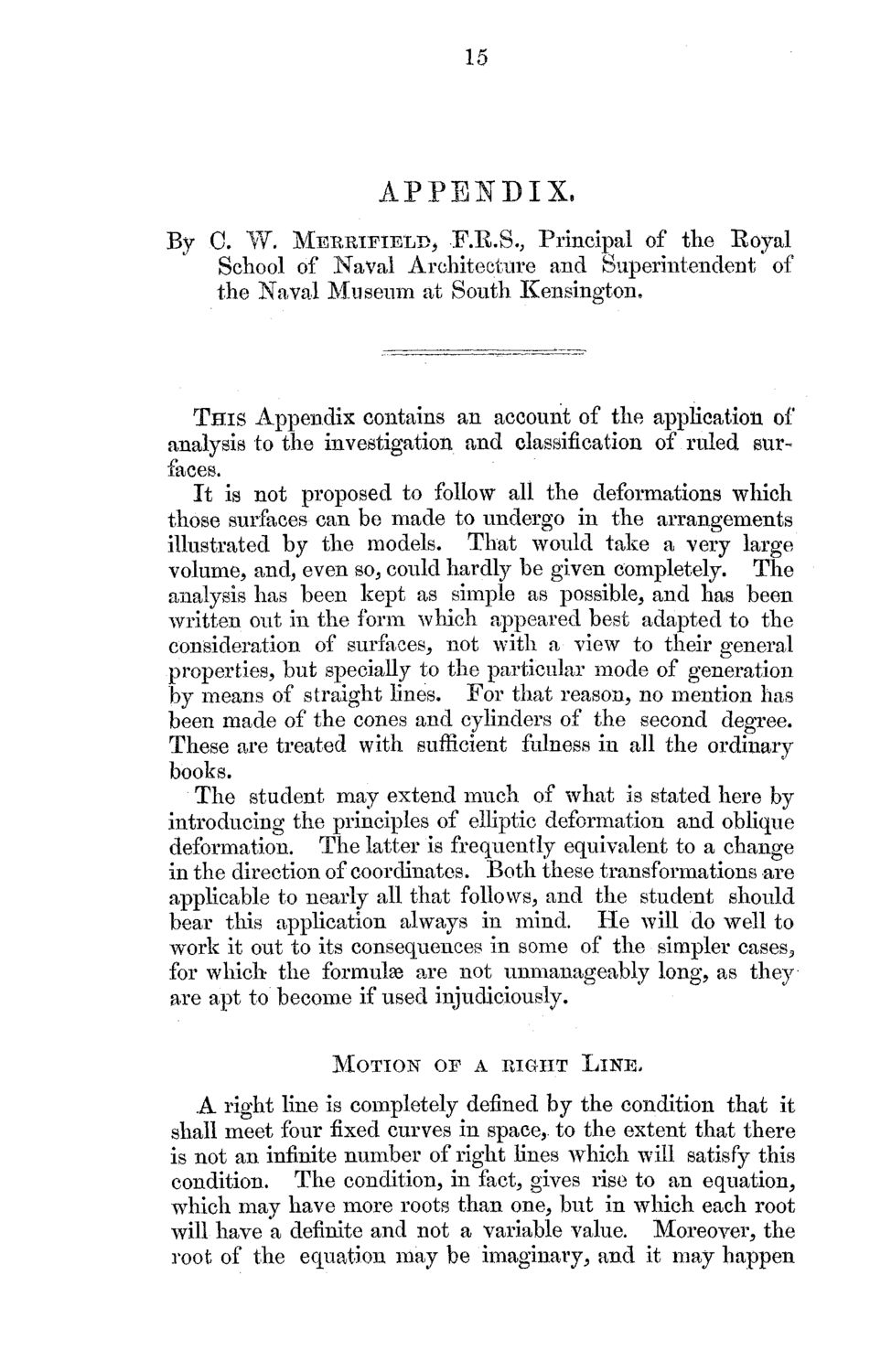| |
| |
Caption: Mathematical Models Catalog of a Collection of Models of Ruled Surfaces
This is a reduced-resolution page image for fast online browsing.

EXTRACTED TEXT FROM PAGE:
15 APPENDIX, School of Naval Architecture and Superintendent of the Naval M u s e u m at South Kensington, By 0. W. Merrifielb^ F.E.S., Principal of the Roya T h i s Appendix contains an account of the application of analysis to the investigation and classification of ruled surfaces. It is not proposed to follow all the deformations which those surfaces can be m a d e to undergo in the arrangements illustrated by the models. That would take a very large volume, and, even so, could hardly be given completely. T h e analysis has been kept as simple as possible, and has been written out in the form which appeared best adapted to the consideration of surfaces, not with a view to their general properties, but specially to the particular m o d e of generation by means of straight lines. For that reason, no mention has been m a d e of the cones and cylinders of the second degree. These are treated with sufficient fulness in all the ordinary books. T h e student m a y extend m u c h of what is stated here by introducing the principles of elliptic deformation and oblique deformation. T h e latter is frequently equivalent to a change in the direction of coordinates. Both these transformations are applicable to nearly all that follows, and the student should bear this application always in mind. H e will do well to work it out to its consequences in some of the simpler cases*, for which the formulse are not unmanageably long, as they are apt to become if used injudiciously. Motion of a right Line. A right line is completely defined by the condition that it shall meet four fixed curves in space, to the extent that there is not an infinite number of right lines which will satisfy this condition. T h e condition, in fact, gives rise to an equation, which m a y have more roots than one, but in which each root will have a definite and not a variable value. Moreover, the root of the equation m a y be imaginary, and it m a y happen
| |